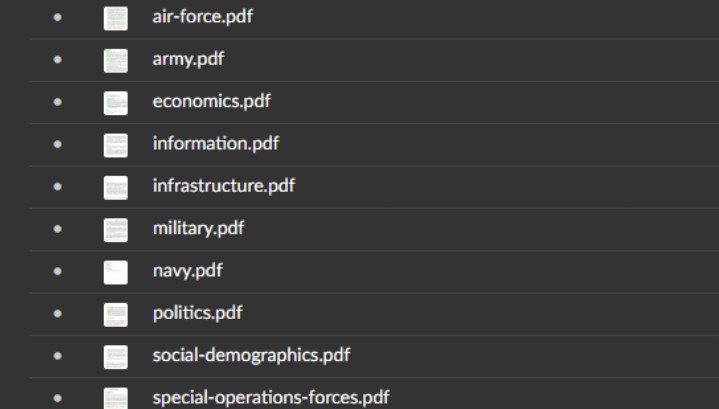ıntspy databases
IntSpy Databases Intelligence: Search, Correlate, and Discover – Comprehensive Solutions for Cross-Platform Data Mining and Strategic Analysis.



[MODULE]ıntspy databases on platform
IntSpy Databases Intelligence Overview
The IntSpy Databases Intelligence module provides an all-encompassing approach to searching, analyzing, and correlating data from a diverse array of databases. Designed for government agencies, intelligence professionals, security experts, and researchers, this module enables users to access vast amounts of information from various public, semi-public, and specialized databases. By offering advanced data mining and analysis tools, IntSpy Databases Intelligence supports decision-making, investigations, and strategic operations, allowing for a deep understanding of individuals, companies, events, and other critical data points.
Key Features and Sub-Modules of Databases Intelligence
-
Comprehensive Data Search
- Cross-Platform Data Integration: The module integrates data from a wide range of databases, including public records, financial registries, corporate databases, criminal records, social media, government databases, and more. This integration allows users to conduct in-depth research across multiple domains.
- Advanced Search Filters: Users can apply a variety of filters, such as location, entity type, date, and keywords, to fine-tune searches and retrieve relevant information quickly. This functionality supports precision in data gathering and reduces noise, making search results highly relevant.
- Customizable Data Sources: Users can specify which databases to include or exclude from searches, making the tool adaptable to specific research needs. This flexibility allows users to focus on particular data types or regions for targeted investigations.
-
People and Company Data Mining
- Personal Records Search: Users can search for individuals in public and semi-public records databases, collecting data such as contact information, criminal records, addresses, education, and employment history. This helps in profiling persons of interest and verifying identity information.
- Corporate Records and Financial Data: The module allows for searching through company records, including registration details, financial information, shareholders, board members, and partnerships. This helps in assessing company legitimacy, mapping corporate structures, and identifying key stakeholders.
- Data Correlation Across Sources: Information about people and companies from different databases can be cross-referenced to identify relationships, such as ownership, partnerships, or connections between individuals and corporate entities. This correlation is crucial for investigations into fraud, corruption, or conflict of interest.
-
Public Records and Government Databases
- Government Records Integration: The module integrates public records from government sources, such as court records, property records, business registrations, and legislation documents. This provides users with verified and trustworthy data for legal and investigative purposes.
- Country-Specific Data Sources: Users can search country-specific databases to retrieve information relevant to a particular geographic location. This capability helps in understanding local context, regulations, and laws, making it useful for regional investigations and compliance purposes.
-
Historical Data Access and Trends Analysis
- Access to Historical Records: Users can access historical data from various databases, allowing them to analyze trends, understand the evolution of individuals or companies, and identify changes in behaviors or status over time.
- Trend Visualization: The module provides tools to visualize trends in data, such as financial growth, criminal activity, or corporate mergers and acquisitions. Users can generate charts and graphs to better understand how data points evolve, enabling informed decision-making.
-
Metadata Extraction and Analysis
- Comprehensive Metadata Extraction: The module allows users to extract metadata from data entries, such as timestamp, source type, data reliability, and geolocation. This metadata is useful for assessing the credibility of the information, understanding data sources, and verifying authenticity.
- Pattern Recognition and Data Clustering: Advanced algorithms analyze metadata to identify patterns, clusters, and outliers. This capability helps users uncover hidden connections, detect anomalies, and understand data relationships at a deeper level.
-
Custom Database Integration
- Third-Party Data Integration: The module supports the integration of third-party databases, including private datasets or proprietary information owned by organizations. This allows users to enrich existing data sources and conduct more comprehensive research.
- API-Based Integration: Users can leverage APIs to connect external databases directly to the IntSpy platform, providing real-time access to updated information. This integration supports dynamic investigations and ensures that users always have the most current data available.
-
Visual Analysis and Data Mapping
- Relationship Mapping: The module visually represents relationships between individuals, companies, assets, and other entities using network graphs. Users can see how different data points are connected, making it easy to identify significant links and influence networks.
- Interactive Dashboards: The interactive dashboards allow users to visualize search results in various formats, including charts, tables, maps, and network diagrams. This helps users digest large volumes of data more effectively and derive meaningful insights from complex datasets.
-
Alert and Notification System
- Custom Alerts on Data Changes: Users can set alerts to notify them of any changes in the data they are tracking. For example, if there is an update to a company registration or a new address appears for a particular individual, users will receive a notification.
- Event-Based Alerts: The module also provides alerts for specific events, such as the creation of a new company, a change in corporate ownership, or the registration of a new property. This helps users stay informed about ongoing developments in real-time and allows for timely action.
Use Cases and Applications
-
Due Diligence and Background Checks
- The Databases Intelligence module is ideal for conducting due diligence on individuals and companies before engaging in business partnerships, mergers, or acquisitions. Users can verify credentials, assess risk, and ensure regulatory compliance by accessing public records, financial data, and criminal histories.
-
Fraud Detection and Investigation
- By cross-referencing data from various sources, the module helps identify suspicious activities or relationships. For example, users can uncover shell companies, phantom addresses, or hidden connections that may indicate fraud or money laundering. Investigators can use the module to gather and correlate evidence for legal proceedings.
-
Asset Recovery and Forensic Investigations
- Government agencies and law enforcement can leverage the module to track assets, including property, vehicles, and financial holdings. By accessing comprehensive public records and integrating external data, users can investigate hidden assets and support recovery efforts in cases of financial crime.
-
Strategic Risk Assessment and Intelligence Gathering
- Intelligence professionals and risk analysts can use the module to assess geopolitical risks, corporate stability, and financial threats by analyzing a range of databases. Users can understand the broader landscape by examining relationships between companies, individuals, and events.
-
Regulatory Compliance and Auditing
- Financial institutions can use the module for AML (Anti-Money Laundering) and KYC (Know Your Customer) compliance. By accessing a wide range of public and government records, banks can verify client identities, assess the legitimacy of transactions, and ensure compliance with regulatory standards.
Key Benefits of the Databases Intelligence Module
- Extensive Data Coverage: Integrates information from multiple public, private, and specialized databases, providing users with comprehensive data coverage across different domains.
- Cross-Domain Correlation: Allows users to correlate information across different databases, helping to identify relationships and uncover hidden connections between entities, individuals, and activities.
- Customizable Search and Alerts: Offers advanced filtering and customizable alert systems, ensuring that users can conduct focused research and receive timely updates about changes or events of interest.
- Flexible Data Integration: Supports the integration of third-party databases and API-based connections, allowing users to expand data sources and customize the module to meet specific research needs.
- Visual Tools for Data Analysis: Provides a suite of visualization tools that enable users to create network graphs, charts, and interactive dashboards for deeper analysis and presentation of complex data.
Integration and Usability
- The Databases Intelligence module integrates seamlessly with the IntSpy platform, allowing users to leverage additional modules like People and Company Intelligence, Military Intelligence, and Cyber Intelligence for a more holistic view of intelligence activities.
- Custom Dashboards enable users to visualize their findings and create tailored reports, helping stakeholders understand the insights derived from extensive data searches and analyses.
- Scalable Architecture: The module’s scalable architecture allows it to handle large datasets, making it suitable for use by both small teams and large organizations dealing with vast amounts of information.
